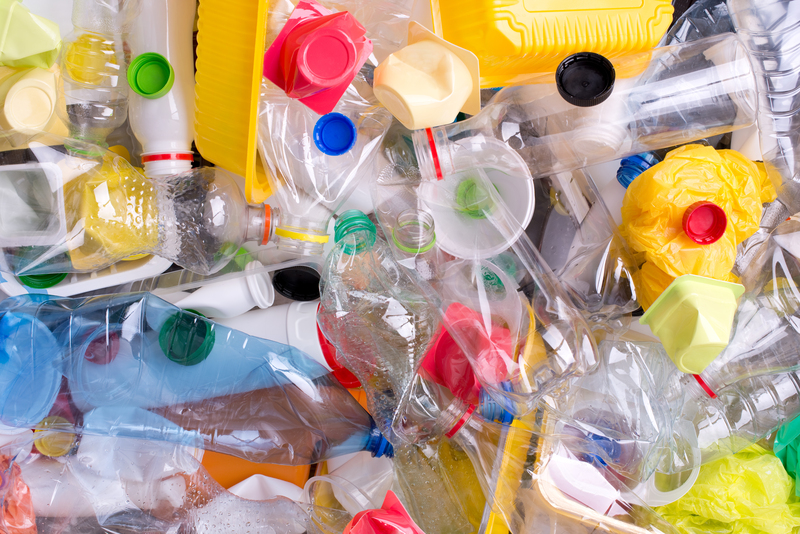Best Practices for Disposing of Used Masks and Gloves Efficiently
The widespread use of personal protective equipment (PPE) has become an essential facet of daily life, especially since the COVID-19 pandemic. While masks and gloves are crucial tools in mitigating the spread of infectious diseases, their improper disposal poses significant health and environmental risks. Learning the best practices for disposing of used masks and gloves efficiently ensures not only public safety but also the sustainability of our environment. This comprehensive guide will inform you how to deal with used PPE responsibly and effectively.
Why Proper Disposal of Masks and Gloves Matters
Disposable face masks and gloves are primarily made from synthetic materials such as polypropylene, latex, and nitrile. Inefficient or careless disposal of these items can lead to severe environmental pollution, threaten marine and terrestrial ecosystems, and increase the risk of disease transmission. Understanding why it is imperative to dispose of used PPE correctly is the first step towards safe and efficient waste management.
Health and Safety Concerns
- Transmission of pathogens: Used PPE may harbor viruses and bacteria that could infect others if left in public spaces.
- Health hazard for sanitation workers: Workers handling household or commercial waste are at increased risk of coming into contact with contaminated materials.
- Spread within communities: Careless disposal can facilitate the indirect transfer of pathogens to children, pets, or the immunocompromised.
Environmental Impact
- Non-biodegradable waste: Most single-use masks and gloves take decades to degrade, contributing to landfill overflow.
- Marine pollution: Improperly discarded PPE is often carried to rivers and oceans, harming aquatic life.
- Microplastics: As PPE breaks down, it forms microplastics that enter the food chain, impacting wildlife and human health.

Top Guidelines for Efficient Mask and Glove Disposal
Implementing the following best practices for disposing of used masks and gloves efficiently ensures safety for yourself and others while minimizing environmental harm. Below are step-by-step recommendations for individuals, families, and businesses.
1. Remove PPE Properly
- Do not touch the outer surface: Always remove masks and gloves by touching only the straps, edges, or interior surfaces to avoid contaminating your hands.
- Perform hand hygiene: Wash your hands thoroughly with soap and water, or use an alcohol-based hand sanitizer before and after removing PPE.
2. Place Used Masks and Gloves in a Sealed Bag
- Contain PPE waste: Place disposable masks and gloves in a dedicated, leak-proof bag immediately after use.
- Seal before discarding: Tie the bag or zip it tightly to prevent the contents from falling out or being accessed by animals.
- Separate from recyclable waste: Use a different bag or bin from general recyclables to prevent contamination.
3. Dispose of PPE with General Household Waste
- Follow local waste management guidelines: Most municipalities recommend discarding used PPE with general household waste, not in recycling bins.
- Mark as "contaminated" when necessary: Especially if caring for a sick person, label the waste bag to alert sanitation workers to potential biohazards.
4. Never Flush Masks or Gloves Down the Toilet
- Prevent plumbing blockages: Flushing these items causes sewer clogs and increases the risk of environmental contamination.
- Dispose in the trash only: Regardless of the situation, always throw PPE in the trash rather than flushing.
5. Use Designated PPE Disposal Bins in Public Spaces
- Look for marked bins: Many airports, hospitals, and public areas have special bins for used masks and gloves. Use these whenever possible.
- Encourage others: Promote the safe use of these bins by informing friends and family.
6. Opt for Reusable Masks When Practical
- Reduce single-use waste: As an alternative, cloth masks that can be washed and reused help lessen the environmental footprint.
- Clean regularly: Ensure reusable masks are laundered after each use using hot water and soap.
Innovative Strategies for Large-Scale PPE Waste Management
In heavily populated areas and healthcare settings, disposing of huge volumes of PPE poses unique challenges. Here's how businesses and institutions can enhance PPE waste management:
Educate Staff and Stakeholders
- Conduct regular training: Teach proper removal and disposal of PPE to minimize on-site contamination risks.
- Put up informational posters and signage: Make it easy for everyone to understand safe practices by displaying clear instructions in prominent locations.
Establish Dedicated Waste Streams
- Use color-coded bins: Assign a specific color or label for PPE waste to prevent mixing with general or recyclable waste.
- Monitor fill levels: Regularly empty bins and avoid overfilling to reduce potential exposure.
Collaborate With Waste Disposal Companies
- Arrange specialized pickups: Work with local waste management services equipped to handle infectious or potentially infectious waste safely.
- Stay updated on regulations: Regularly review regional changes regarding hazardous or medical waste to remain compliant.
Consider On-site Disposal Solutions
- Install incinerators: Larger facilities can use small-scale incinerators for on-site destruction of infectious waste, minimizing the risk of spread during transport.
- Explore PPE recycling programs: Some innovative recycling programs are piloting methods to sanitize and repurpose PPE waste into construction materials and fuel.
Common Mistakes When Disposing of Masks and Gloves
Avoiding certain pitfalls is essential for safe and efficient PPE waste disposal. Here are some of the most common mistakes and how to prevent them:
- Mixing PPE with recyclables: Disposable masks and gloves cannot be recycled through standard programs; doing so compromises recycling streams.
- Leaving PPE in public spaces: Discarding used masks or gloves on the street, in parks, or public transit not only creates litter but also exposes others to health risks.
- Improper containment: Throwing loose PPE in open wastebaskets increases the risk of accidental contact for others.
- Reusing single-use PPE: Disposable masks and gloves are not designed for more than one use and may lose efficacy while accumulating contaminants.
How to Encourage Efficient PPE Disposal in Your Community
Establishing a community-wide culture of responsible mask and glove disposal is paramount. Here are actionable tips for fostering better habits:
- Lead by example: Visibly practice good disposal habits and share your practices with friends, neighbors, and family.
- Promote public awareness: Utilize social media or local groups to share information about the importance of efficient PPE disposal.
- Work with local authorities: Advocate for dedicated PPE waste bins in high-traffic areas and regular waste pickups to manage public waste.
- Support environmental organizations: Participate in cleanup days or fundraisers aimed at managing PPE litter and pollution.
Environmental Alternatives and Innovations
As awareness grows about the environmental consequences of PPE waste, researchers and entrepreneurs are developing ecologically friendly alternatives and innovative recycling solutions.
Biodegradable Masks and Gloves
- Compostable materials: Some companies now offer masks and gloves made from plant-based materials that break down in compostable environments.
- Eco-certification: Look for products certified as biodegradable or compostable for responsible purchasing.
PPE Recycling Initiatives
- Collection programs: Specialized companies such as TerraCycle run dedicated recycling programs for used PPE, turning them into construction materials or energy sources.
- Participate in pilot schemes: Check with your local government for pilot recycling programs and drop-off locations for PPE waste.
Best Practices for Disposing of Used PPE in Special Situations
When Caring for the Sick or Quarantined Persons
- Double-bag strategy: Use two bags (one inside the other) to contain any potentially infectious waste, and seal tightly before disposal.
- Wait before disposing: Instructed by some health authorities, keep the double-bagged waste for at least 72 hours before placing it with other general waste to further reduce risk.
- Disinfect outer surfaces: Wipe down the outside of the bag with a household disinfectant before placing it in the trash.
PPE Disposal During Outdoor Activities or Travel
- Use personal trash bags: Carry a small resealable bag to store used masks and gloves until proper disposal is available.
- Avoid littering at all costs: Always pack out what you pack in, ensuring you leave no waste behind.

Frequently Asked Questions About PPE Disposal
Can Used Masks and Gloves Be Recycled?
No, regular municipal recycling systems cannot process disposable masks and gloves as they are typically made from mixed materials and may be contaminated. Specialized recycling schemes may be available in certain areas.
Can I Burn Used PPE at Home?
Not recommended. Home incineration without proper equipment can release toxic fumes and does not adequately destroy all pathogens. Leave this to professional waste handling services.
What Should I Do If I See PPE Litter in Public?
If safe to do so, pick up using a tissue or gloved hand, place in a sealed bag, and dispose of with general waste. Remember to clean your hands thoroughly afterward.
Conclusion: Responsible PPE Disposal Prevents Pollution and Protects Health
By adopting best practices for disposing of used masks and gloves efficiently, every individual and organization can make a tangible difference in combating both disease spread and pollution. From removal to final disposal, carefully handling PPE ensures community safety, protects sanitation workers, and shields nature against the rising tide of synthetic waste. Make responsible disposal a habit today--protect your community and our planet one mask and glove at a time.
Quick Checklist: Efficient PPE Disposal
- Always remove PPE by the straps or edges
- Place in a sealed, separate waste bag immediately after use
- Never dispose of masks or gloves in recycling bins
- Never flush PPE down the toilet
- Use designated bins when available
- Sustainably switch to reusable masks when possible
- Support and educate your community on safe disposal
Efficient mask and glove disposal is everyone's responsibility--let's do our part!